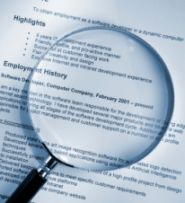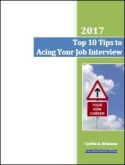 |
||
How to Create a Resume Advice on how to create a resume is readily available from a wide variety of sites on the internet. What makes our advice different? Or for that matter, better? Straight talk. No fluff. Just the facts. We share our opinion, based on years of recruiting experience, about what makes a winning document. You have 15-20 seconds to be noticed by the person reviewing your resume. 15-20 seconds. What kind of impression will you make? Strong enough to be asked in for an interview? Read on. We'll show you how to create a resume that will get you more interviews. Guaranteed. Your Resume OutlineThe easiest way to get started on building a resume is with a good outline. It's really very simple:
Getting StartedWrite your Summary last. It's the hardest part of writing a resume, so let's tackle the easier points first. Other elements of how to create a resume are much more factual, so in many ways, they can be pulled together quickly. Your contact information. Pretty self explanatory, right? Just a couple of quick points:
Your professional experience is also straight forward:
Accomplishments are hard, so we'll skip these for the moment as well. Move onto your Academic Record. List your educational experience, post high school, starting with your highest degree. For each degree, list the college or university, the degree conferred, and your major. Do not include dates. If you have had substantial professional training, for example, Six Sigma, list that as well. Do not include every training seminar you've ever attended. If you have attended numerous training sessions around a topic - e.g. management, sales - a line item that incorporates all of this training could be included. Make a list of any awards or honors you've received. And finally, list the professional associations you belong to. This should be a current list. AccomplishmentsA strong resume highlights significant accomplishments in each position you've held.
Your Summary StatementResume objectives are out. They are too limiting. Instead, write a strong summary statement that captures your background and key skills. Think about this as a short answer to the question "tell me about yourself." This statement should be 3-5 sentences long. You can include a bullet pointed list of key skills following the summary. For more in depth information on this important aspect of how to create a resume, check out the following sections: Putting it All TogetherThe hard work is done. You now know how to create a resume, and in fact, have done it! Keep in mind some resume style and format guidelines:
Resume CritiqueOnce your document is together, don't be afraid to get a second opinion! A Resume Critique is an inexpensive way to know that you have created a resume that showcases your experience. Whether you use us, or another service, this is a smart final step to the process. |
|
|
|
[?] SUBSCRIBE
|
||
About Us | Contact Us |
Privacy Policy |
||





